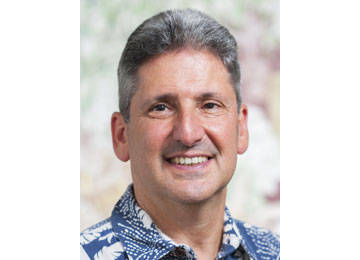University of Hawaii students will receive a refund for some university fees in the wake of the COVID-19 pandemic that has shifted students online and off campus.
“Let me say, we are committed to deliver a high quality UH education, and we have no intention of refunding tuition and academic fees that are dedicated to the cost of delivering education. That work continues,” UH President David Lassner said Thursday in and update to the Board of Regents.
Lassner said there was no cost savings associated with moving courses online, and UH has always charged the same tuition regardless of the mode of instruction.
However, UH assembled teams to take a comprehensive look at academic and student-related fees and identified those that could be refunded on a prorated basis.
Outside of tuition, Lassner said room and board are the largest expenses for students at UH-Manoa and UH-Hilo, and those will be refunded on a prorated basis from the time each student vacated their room.
Arrangements also are being made for students who did not return to the campuses after spring break to either pick up their belongings or have them shipped.
UH-Hilo Vice Chancellor of Student Affair Farrah-Marie Gomes was not available Friday afternoon to answer questions about how many students will be refunded room and board fees and the impact those refunds might have on the university.
Lassner said the next largest fees are for the student recreation centers at the Manoa and Hilo campuses, both of which closed mid-semester.
Because the UH-Hilo center was constructed with general obligation bonds, student fees will be refunded, again on a prorated basis.
But because the Manoa facility was constructed with revenue bonds and with a student fee supported by the student body specifically to fund that debt, those fees will not be refunded.
Fees for materials not being used, such as chemicals or art supplies, will be refunded, but fees for co-curricular activities that are continuing virtually, like student government, will not.
Lassner also spoke about the financial impact the COVID-19 crisis is having on the institution.
He said Hawaii will receive more than $40 million in federal funding from the Coronavirus Aid, Relief and Economic Security (CARES) Act — $9.99 million from the Governor Education Relief Fund and an estimated $32.6 million from the Higher Education Emergency Relief Fund.
Lassner said UH is now beginning conversations with Gov. David Ige’s office regarding the Governor Education Relief Fund, which can be used for early childhood, K-12 or higher education.
UH’s allocation of the Higher Education Emergency Relief Fund will be divvied up between the system’s 10 campuses. UH-Hilo is estimated to receive nearly $3 million.
At least half of those funds must be dispersed to students in the form of student aid.
Although those funds are allocated to the campus, Lassner said UH leadership decided there should be a common approach to using the money.
The focus will be on two priorities: emergency aid grants directly to students so they can successfully complete the current semester, and aid to continuing students to ensure they can enroll in the fall.
The remaining half of the HEERF money can be used by campuses to address “costs associated with COVID,” said Lassner, who did not elaborate on what such costs might be.
“So let me stress, these funds will not relieve the budget pressures … but they will be very helpful in helping our students in dealing with the actual costs of COVID on our campuses.”
In terms of overall finances, Lassner said he instituted a hiring freeze toward at the end of March.
“We cannot survive on freezes or, frankly, we cannot again survive with across-the-board cuts that we have been most commonly utilizing in the past,” he said.
UH is now pivoting into more serious financial planning, but much is still unknown.
“We have some conventional wisdom that suggests we will do well on our resident students (enrollment), which is great for serving our mission,” Lassner said. “We will probably not do as well on nonresident students and especially international students, which is bad for our bottom line because those are the groups that pay higher tuition.”
Specific plans will be fine-tuned as more information is available, but the future may look different, he said.
“On behalf of the UH leadership, I can assure you that we are not taking the perspective that our job is to protect and preserve what we do today or make some temporary steps, and then just try and get back to exactly the way things were,” Lassner said. “In my role as leader of UH-Manoa, I am personally engaged with our campus leadership team in budget planning for the campus. It will certainly involve changes and articulation of priorities that will be extremely uncomfortable for many, and I know the same is true on all of our campuses as we literally reconsider every assumption and long-standing practice.
“We also have to ensure that we learn from this long, forced and uncomfortable shift to online modes of teaching, learning and working. …”
Email Stephanie Salmons at ssalmons@hawaiitribune-herald.com.






